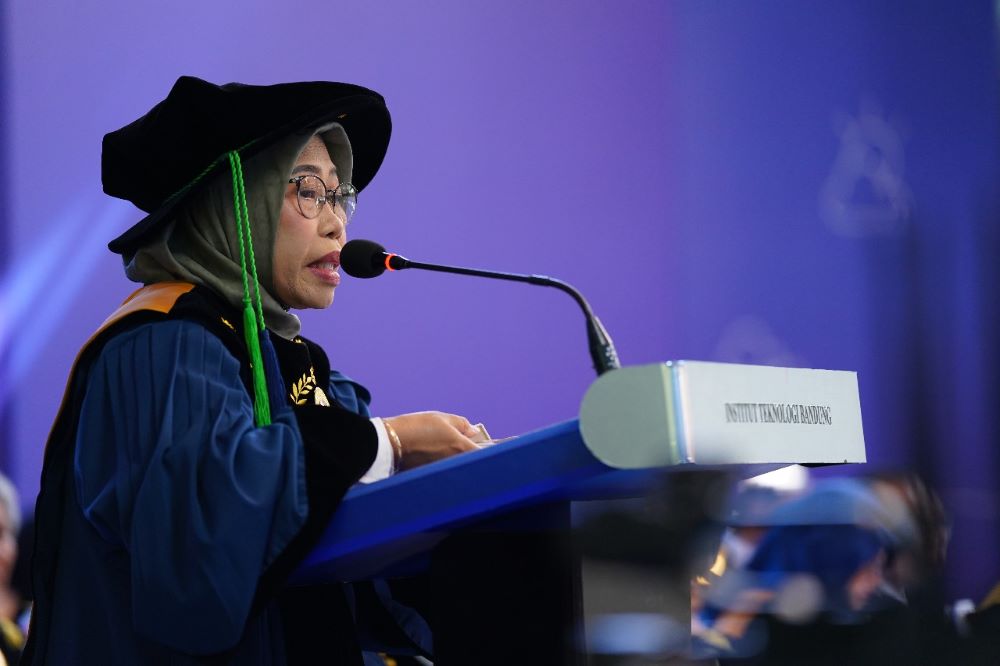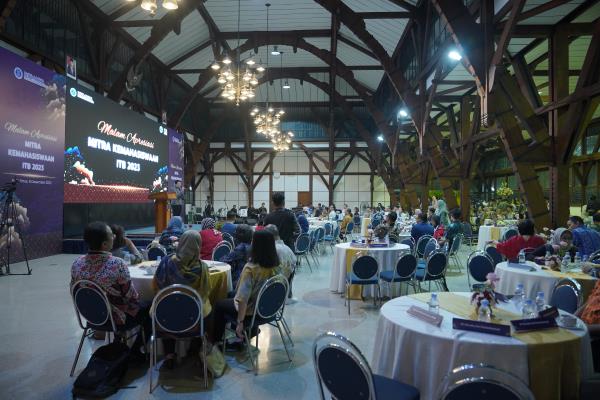Scientific Address: Biophysics for the Development of Human Electrophysiology
By Iko Sutrisko Prakasa Lay -
Editor M. Naufal Hafizh, S.S.

BANDUNG, itb.ac.id - Prof. Dr. Dra. Siti Nurul Khotimah, M.Sc., from the Faculty of Mathematics and Natural Sciences at Institut Teknologi Bandung (FMNS ITB), delivered a scholarly speech titled "Biophysics for the Development of Human Electrophysiology" at the West Hall of ITB Campus Ganesha, on Saturday, June 22, 2024. Her lecture highlighted the intersection of physics and biology, which began in the 20th century and continues to evolve, particularly in the field of biophysics.
She explained the history of biophysics as a branch of science that applies physics methods to study biological processes. "The interaction between physics and biology started in the 20th century and this field is called biophysics. The application of physics in biological systems is widely found, particularly in electrophysiology," she revealed
The application of physics methods in biological systems is prominently seen in the field of electrophysiology. Electrophysiology is the study of electrical properties in cells, tissues, and biological organs, enabling a deeper understanding of electrical activities in the human body through instruments such as electrocardiograms (EKG), electroencephalograms (EEG), electromyograms (EMG), and electrooculograms (EOG).
Prof. Siti emphasized the importance of non-invasive technology in the medical field. Electrophysiological tools like EKG, EEG, EMG, and EOG are non-invasive, non-radiative, effective, efficient, and real-time. The use of these technologies allows for early detection and continuous monitoring of individuals' health conditions without invasive procedures.
She further explained how electrophysiological signals are formed and measured. The movement of ions across cell membranes, controlled by potential differences and membrane permeability, generates electrical signals that can be recorded. For example, the electrocardiogram (EKG) signal, which depicts cardiac electrical activity, can be measured through electrodes placed on the skin surface. This signal can be analyzed to detect cardiac rhythm abnormalities, known as arrhythmias.
Data from the World Health Organization (WHO) indicates that ischemic heart disease and hypertension are among the top ten causes of death in Indonesia before the Covid-19 pandemic. Utilizing monitoring devices such as smartwatches equipped with EKG can aid in early detection of these heart rhythm irregularities. However, she stressed the importance of validating the accuracy of these devices against clinical standards.
In addition to EKG, she discussed the use of EEG in diagnosing brain disorders such as stroke and epilepsy. EEG, which records brain electrical activity, can be used to identify abnormal patterns associated with neurological disorders. Prof. Siti's research demonstrates significant differences in brain wave patterns between healthy individuals and those suffering from disorders like schizophrenia and bipolar disorder.
Prof. Siti emphasized the importance of interdisciplinary collaboration, including psychology, biology, biomedical engineering, visual communication design, medicine, and others, in biophysical and electrophysiological research. This is particularly relevant in multidisciplinary EEG research to ensure comprehensive and beneficial outcomes. Advanced analysis using technologies like Artificial Intelligence (AI) to enhance medical diagnosis accuracy and efficiency, such as Brain-Computer Interface (BCI), represents transformative technology enabling direct communication between the brain and external devices, facilitating control and communication for individuals with severe neuromuscular disorders.

.jpg)

.jpg)
.jpg)
.jpg)


